Both Filet Mignon and Sirloin are two of the most sought-after cuts of beef, often featured on many restaurants’ menus worldwide. But which one is the better choice? In this article, we’ll compare the Filet Mignon vs Sirloin, looking at their flavor profiles, texture, and cooking methods. While Filet Mignon is famous for its tender, buttery texture, Sirloin is known for its meaty and full-bodied flavor. So, which cut should you choose for your next meal? Join us as we explore the differences between Filet Mignon and Sirloin to help you make an informed decision.
What is Filet Mignon?
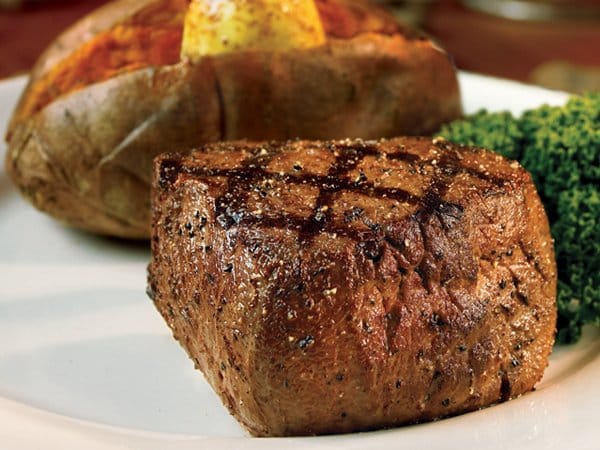
Filet mignon is a steak cut from the smallest end of a beef tenderloin. It is thought to be one of the most tender and desirable cuts of steak available, as it contains very little fat and is relatively lean. The name “filet mignon” comes from the French term “filet mignon,” which means “dainty filet.”
Filet mignon has a delicate, mild flavor that is slightly sweet and nutty, making it perfect for various dishes. It can be grilled, pan-seared, or even cooked in the oven. It is also popularly served with various sauces, such as béarnaise or hollandaise, and accompaniments like mushrooms and truffle butter.
Filet mignon is often the most expensive cut of steak, as it is one of the most tender and desirable. This is because the tenderloin comes from the most sought-after part of the animal—the area near the back of the animal where the tenderloins are connected to the spine. Cutting is also more labor-intensive, as the beef tenderloin must be sectioned into small filets.
What is Sirloin?
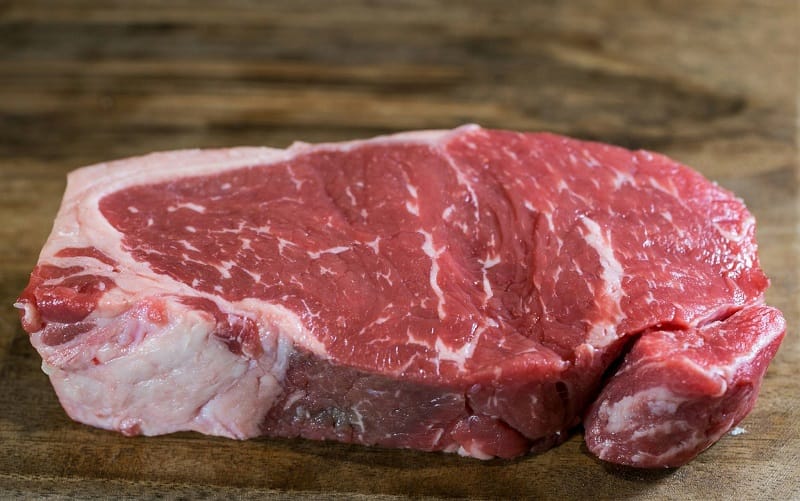
Sirloin is a cut of beef taken from the back of the cow. It is a lean cut of beef that is slightly less tender than other cuts, such as ribeye or tenderloin. The sirloin is a flavorful and juicy cut, and it is an excellent option for anyone looking for an affordable, tasty cut of beef.
Sirloin comprises two sections: the top sirloin and the bottom sirloin. The top sirloin is the two’s more tender, flavorful, and expensive cut. The bottom sirloin is the less expensive cut, but it still has good flavor and can be prepared in many ways.
The top sirloin is usually cut into steaks that range from 1 to 2 inches thick. The steaks can be grilled, pan-seared, or broiled. They are great served with a sauce or marinade or on their own with salt and pepper. The top sirloin is also great for making kabobs and fajitas.
The bottom sirloin is usually cut into cubes or thin strips for stir-fry or kebabs. It can also be cubed for a stew or ground for hamburgers or meatloaf. The bottom sirloin is also great for slow cooking in a slow cooker.
Filet Mignon and Sirloin: What’re The Similarities
These two cuts of beef have a lot in common, and choosing between them can be difficult. But what exactly is what are the similarities between these two cuts of steak?
The first similarity between Filet Mignon and Sirloin is that they come from the same part of the cow. Both Filet Mignon and Sirloin are located in the cow’s loin section, which is in the middle of the animal’s back.
The second similarity between Filet Mignon and Sirloin is the way they’re both prepared. Both of these cuts of steak are often served well-done, but they can also be cooked to medium-rare or rare.
In terms of taste and texture, Filet Mignon and Sirloin have a lot in common. Both steaks are juicy and tender with a mild flavor. The only difference is that Filet Mignon is a bit more buttery and luxurious in taste.
Regarding health benefits, both Filet Mignon and Sirloin are incredibly beneficial for your health. Both cuts of steak are high in protein, low in fat, and contain good vitamins and minerals.
What Are The Key Differences Between Filet Mignon vs Sirloin Steak?
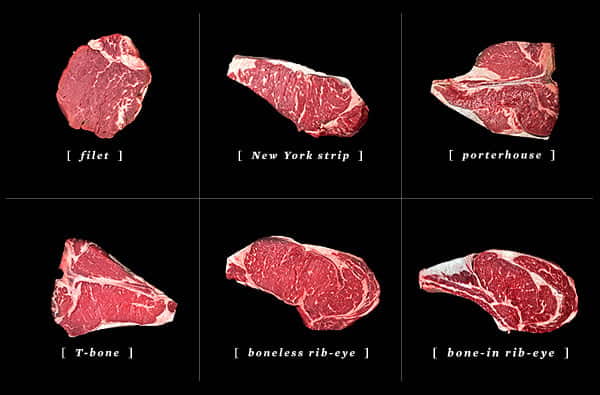
When choosing between filet mignon and sirloin steak, there are some key differences to be aware of. Firstly, sirloin has a beefier flavor than filet mignon, known for its delicate flavor. Sirloin is also a leaner cut of beef and is much cheaper than filet mignon due to being tougher. Filet mignon is considered the more desirable cut due to its tenderness and little marbling.
However, both cuts are highly proteinous and only slightly differ in terms of fat and cholesterol. When it comes to cooking, filet mignon is best cooked at low to medium heat, while sirloin is more suited to higher-heat cooking methods. Ultimately, the main difference between the two is texture and flavor, with filet mignon being more tender while sirloin has a heartier bite with more flavor.
Let’s take a closer look at the key differences between Filet Mignon and Sirloin Steak to ensure you get the most out of your next steak night.
Location
The first key difference between Filet Mignon and Sirloin Steak is their location on the animal. Filet Mignon is cut from the tenderloin muscle between the rib and the sirloin. This muscle is relatively small, so only a few steaks can be cut from a single animal. On the other hand, Sirloin steaks are cut from the lower back of the animal, and more of this muscle is present than the tenderloin.
Which Cut Is More Tender: Filet Mignon Or Sirloin?
When it comes to which cut of steak is more tender, Filet Mignon takes the prize. The tenderloin muscle is the most tender cut on the animal and is desirable because it’s so buttery and flavorful. Sirloin Steak is not as tender as Filet Mignon, but it’s still considered a very tender cut of steak.
Texture
The textures of Filet Mignon and Sirloin Steak are also different. Filet Mignon is tender and almost melts in your mouth, while Sirloin Steak is firmer and has a bit more chew. This difference in texture is due to the amount of fat and connective tissue on the steaks. Filet Mignon has very little fat and connective tissue, so it’s extremely tender. Sirloin Steak has more fat and connective tissue with a bit more bite.
Flavor Profile
The last difference between these two cuts of steak is the flavor profile. Filet Mignon has a mild, slightly sweet flavor that is very mild, while Sirloin Steak has a more robust and beefy flavor. This difference in flavor profile is due to the amount of fat and connective tissue on the steaks. Filet Mignon has very little fat, so it doesn’t have a lot of flavors. On the other hand, Sirloin Steak has more fat and connective tissue, so it has a stronger flavor.
Marbling
The most significant difference between Filet Mignon and Sirloin Steak is the marbling. Filet Mignon is known for its extreme tenderness, and this is due to its lack of marbling. Marbling is the intramuscular fat that’s distributed throughout the steak, and it’s responsible for flavor, juiciness, and texture. Filet Mignon has very little marbling, while Sirloin Steak has a moderate amount.
Fat Content
As a result of the marbling difference, Filet Mignon has less fat content than Sirloin Steak. Filet Mignon is the way to go if you’re trying to watch your fat consumption.
Calories
When compared ounce-for-ounce, Filet Mignon has fewer calories than Sirloin Steak. If you’re watching your calories, Filet Mignon is the winner in this category.
Filet Vs Sirloin: Nutrition
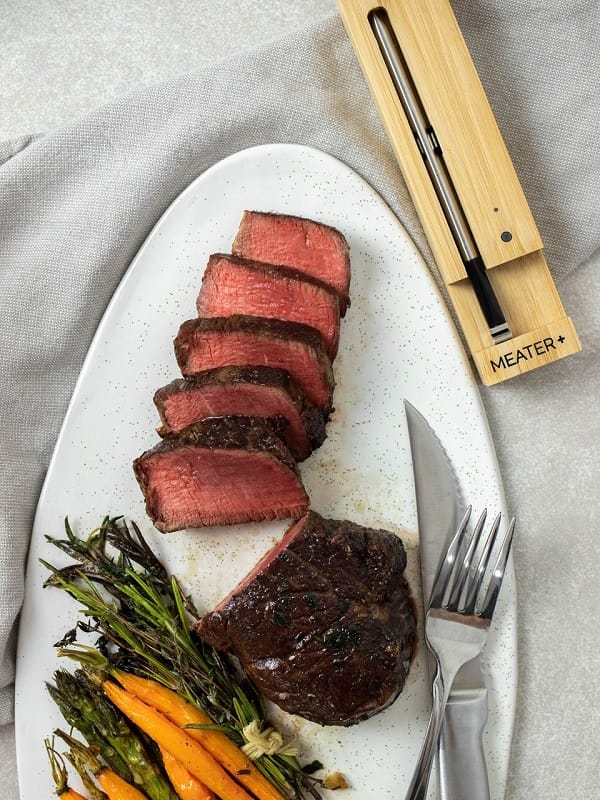
When it comes to nutrition, you’ll get more protein with the Sirloin Steak, but Filet Mignon has more iron and zinc. Filet Mignon is the way to go if you’re looking for a nutrient-dense steak.
Preparation
The way you prepare each steak is quite different. Since Filet Mignon is so tender, it doesn’t need to be cooked longer. This means it’s best cooked with dry heat, such as a grill or a pan sear. On the other hand, Sirloin Steak is a bit tougher, so it needs to be cooked with a moist heat method such as braising or slow cooking.
Price
When it comes to price, Filet Mignon is more expensive than Sirloin steak. Filet Mignon is a tender cut of steak, and it is considered to be the most tender cut of steak. Due to its tenderness and mild flavor, Filet Mignon is more expensive. Sirloin steak is more affordable than Filet Mignon and is not as tender.
Cooking Methods
Filet Mignon is usually cooked using low and slow braising, pan-frying, or baking. This helps to keep the steak tender. On the other hand, Sirloin steak is best cooked with high-heat methods such as grilling or broiling. This helps to bring out the flavor of the steak.
Which Cut Is More Popular Among Restaurant Customers: Filet Mignon Or Sirloin?
Filet Mignon is more popular among restaurant customers compared to Sirloin steak. Filet Mignon is more expensive and is considered to be the most tender cut of steak. It is usually cooked with low and slow methods to keep the steak tender.
Which Cut Is Better For Grilling?
Sirloin steak is better for grilling compared to Filet Mignon. This is because Sirloin steak is thicker and requires higher heat to cook. Grilling helps to bring out more of the flavor of the steak.
Which Is Healthier, Sirloin Steak or Filet Mignon?
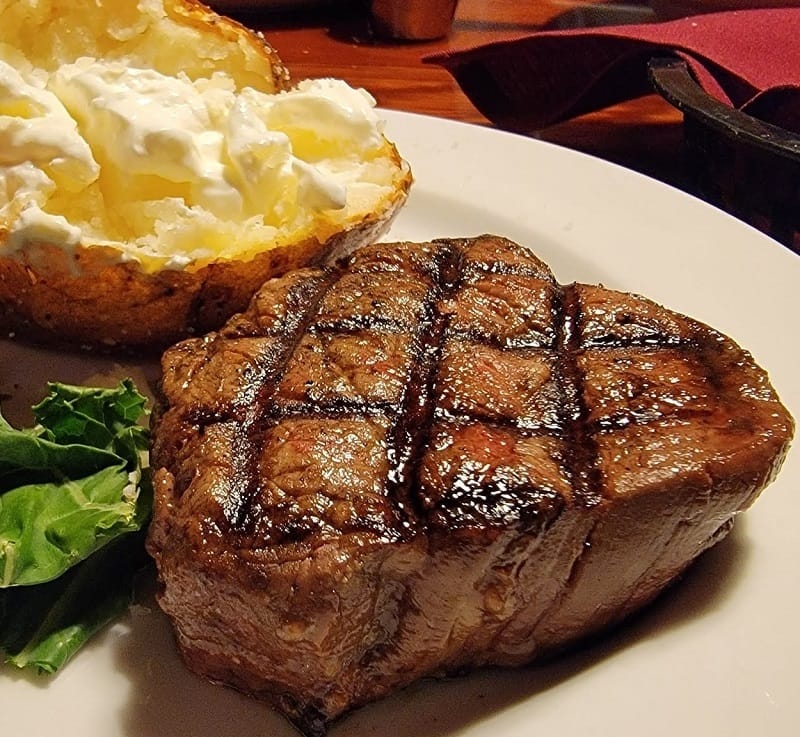
Both Sirloin steak and Filet Mignon provide a good source of protein and nutrients. However, Filet Mignon is healthier than Sirloin steak because it is leaner and contains less fat.
Read more:
- What Part Of The Cow Is Filet Mignon
- Filet Mignon Vs Ribeye
- Ribeye Vs Sirloin
- Beef Tenderloin Vs Filet Mignon
- Ground Sirloin Vs Ground Beef
Can Sirloin Be As Juicy As Filet Mignon?
When choosing between a top sirloin and filet mignon, many tend to lean towards the latter because of its reputation for being the most tender and juicy cut of meat. However, it is factual that top sirloin can be just as juicy as filet mignon as long as it is cooked properly.
Top sirloin is a meaty and flavorful cut of beef that is ideal for grilling, pan-searing, and broiling in the oven. While filet mignon may have a premium flavor and texture that tends to cost more, top sirloin is one of the more affordable cuts of beef available. Plus, with proper cooking techniques and a rest time to allow the meat to reabsorb its juices, top sirloin can be as enjoyable and delicious as filet mignon.
What Are Some Key Factors To Look For When Selecting A High-Quality Cut Of Filet Mignon Or Sirloin Steak?
When selecting a high-quality cut of steak, there are several key factors to remember. Here are some of the key factors to look for when choosing a high-quality cut of filet mignon or sirloin steak:
- Marbling: The amount of fat marbled throughout the steak is one of the most important factors when selecting a high-quality steak. Marbling is the fine, white web-like fat veins running through the steak. The more marbling, the more flavorful and juicy the steak will be.
- Texture: The texture of the steak should be soft and tender. A steak with a hard texture means that it is overcooked and will be dry and tough. A steak with a soft texture indicates that it is cooked correctly and will be juicy and tender.
- Color: A steak with a bright red color indicates that it is fresh and of high quality. A steak with a grayish or brownish color indicates that it has been frozen or is of lower quality.
- Price: Price is also an essential factor to consider when selecting a high-quality steak. The more expensive the cut of steak, the higher the quality.
How To Select The Best Sirloin or Filet Mignon At The Grocery Store?
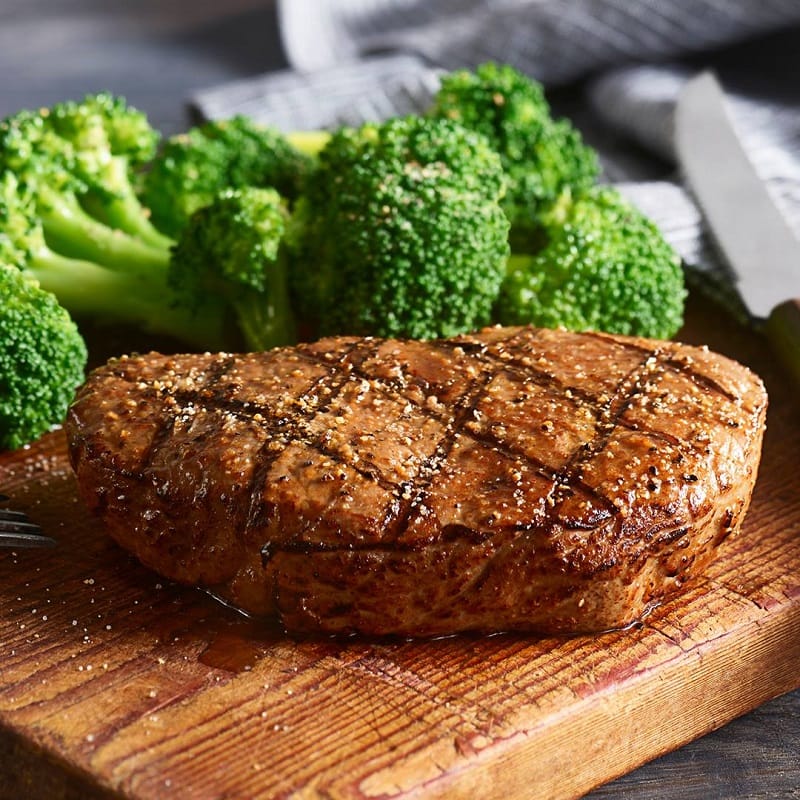
When selecting sirloin or filet mignon at the grocery store, there are several things to keep in mind. First, you want to make sure that the steak is fresh. Look for steaks that are not discolored, have no obvious bruises, and are not overly dry. Also, make sure to check the expiration date on the package.
Next, you want to look at the marbling of the steak. Marbling is the fat that runs through the meat, adding flavor, moisture, and tenderness. The more marbling, the better. If the steak is too lean, it might be tough, dry, and lacking flavor.
Finally, you want to make sure to check the texture of the steak. A sirloin or filet mignon should be firm but also tender. If the steak feels too soft, it may be overcooked.
How To Cook Sirloin?
Cooking sirloin steak is a simple process that can yield delicious and juicy results. With just a few simple steps, you can make a delicious sirloin steak that will be the envy of your family and friends.
- Before you can even cook the steak, you need to ensure it is completely thawed. We recommend allowing the steak to thaw in the refrigerator for 24 hours. This helps break down the connective tissues and makes cooking easier.
- Once the steak has been thawed, remove it from the refrigerator and let it sit at room temperature for 30-40 minutes before cooking. This helps the steak to cook more evenly and prevents it from becoming tough.
- And, of course, don’t forget to season your steak. We recommend using Kansas City Steak Original Steak Seasoning for the perfect flavor. This steak seasoning is made from a blend of herbs and spices, giving your steak an amazing flavor.
- First, preheat a heavy nonstick skillet or cast iron skillet over medium heat until hot, for about 5 minutes. Place your steaks in the hot skillet. Do not add oil or water, and do not cover.
- Sear in a skillet for 12–14 minutes for a 1-inch steak and 14–16 minutes for a 1½-inch steak, turning about 1 minute before the halfway point. When the steak is removed from the pan, a meat thermometer should read 130°F.
- Rest your steaks for 5 minutes before serving, covering lightly with foil. The temperature of the meat will continue to rise for as much as 5°F during this time. The final temperature will read 135°F. Resting steak is important because the heat of cooking pulls the juices in the meat toward the surface. It will give the juices time to sink back in and throughout the meat, keeping it moist and flavorful.
- Using a meat thermometer to check the steak’s internal temperature is important to ensure it is cooked to the perfect level of doneness, from rare to medium-well. This will help you achieve the desired result and ensure your steak doesn’t become overcooked and dry.
How To Cook Filet Mignon?
The first step to cooking a perfect Filet Mignon is properly seasoning your steak with salt and pepper. This will help enhance the meat’s flavor and give it a nice crust as it cooks.
Once your steak is seasoned, you’ll want to preheat a heavy non-stick skillet over medium heat for about 5 minutes. Once it’s hot, it’s time to place your steaks in the skillet. Ensure you don’t overcrowd the skillet – if the steaks are too close together, they won’t sear properly. Do not add oil or water, and do not cover the steaks.
Sear for 7–8 minutes for a 1-inch steak and 9–11 minutes for a 1½ inch steak. Make sure to turn them about 1 minute before the halfway point of cooking. To check for doneness, insert a meat thermometer into the thickest part of the steak. The steak should reach an internal temperature of 130°F for medium-rare and 140°F for medium.
Once the steaks are cooked to your desired doneness, it’s important to let the steak rest for 5 minutes before serving. Allowing the steak to rest will give the juices time to sink back in and throughout the meat, keeping it moist and flavorful.
Common Mistakes To Avoid When Cooking Sirloin and Filet Mignon
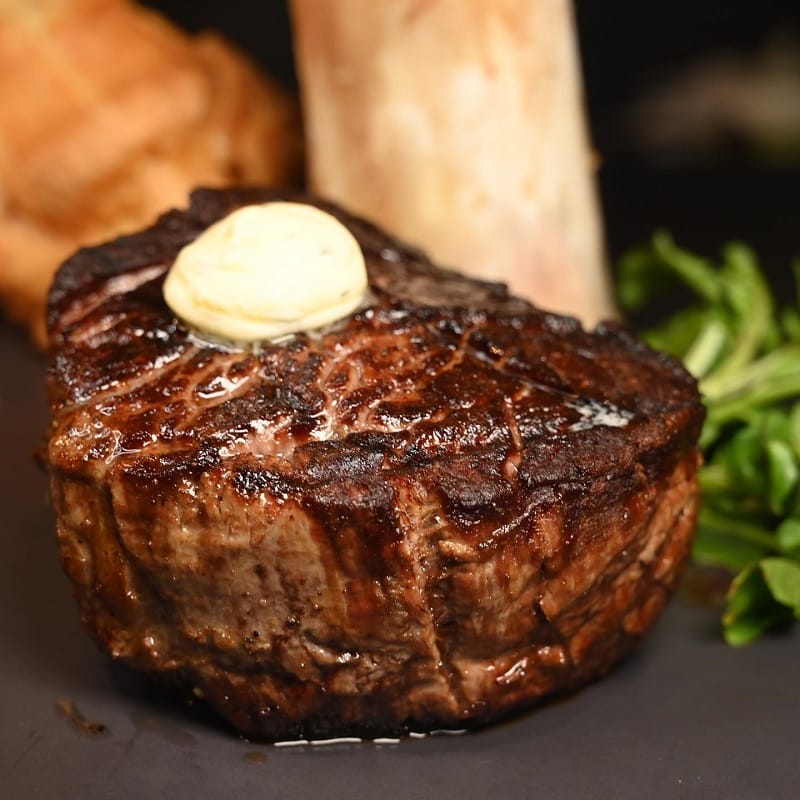
If you’re a beginner in the kitchen or just looking to refine your cooking skills, here are some common mistakes to avoid when cooking sirloin and filet mignon.
- Not Preheating the Grill or Pan: If you’re cooking sirloin or filet mignon on the grill or a pan, preheating is key. This will ensure that the steak is cooked evenly, giving it the best sear. Preheating the grill or pan also helps to produce a flavorful and tender steak.
- Not Seasoning Properly: Seasoning your steak helps to add flavor and also to draw out the natural juices. Season your steak generously with salt and pepper (or your favorite seasoning mix). If you are using a marinade, remember that the flavor of the marinade will be more intense if you let it sit for a few hours before cooking the steak.
- Overcooking: Overcooking your sirloin or filet mignon can cause it to be dry and tough. To ensure you get a perfectly cooked steak, use an instant-read thermometer and check that the internal temperature is at least 135F for medium-rare.
- Not Letting It Rest: Once your steak is cooked, it’s important to rest for a few minutes before slicing it. This will allow the juices to redistribute throughout the steak, making it more tender and flavorful.
- Not Making a Pan Sauce: Once you’ve cooked your steak, there will be delicious bits of flavor left in the pan. Make sure to take advantage of this by making a pan sauce. Add butter, garlic, herbs, and some liquid (wine, water, or stock) and simmer until it reduces to a delicious sauce.
How To Properly Store Sirloin and Filet Mignon?
No matter your preference, both cuts require proper storage to ensure freshness and flavor. Here are some tips for storing sirloin and filet mignon:
- Wrap each cut of meat separately in plastic wrap or butcher paper, ensuring all air is removed. This keeps the meat from drying out and protects it from bacteria.
- Place the wrapped cuts of meat in an airtight container or zip-top bag and store them in the refrigerator for up to five days.
- If you’re not planning on eating the meat within five days, place the wrapped cuts of meat in an airtight container and store them in the freezer for up to six months.
- When you’re ready to cook the meat, take it out of the freezer and let it thaw in the refrigerator for 24 hours.
- When you’re ready to cook, remove the sirloin and filet mignon from the wrappers and pat dry with a paper towel.
- Heat a skillet or grill to the proper temperature, and season the meat with salt and pepper.
- Cook the sirloin and filet mignon to the desired doneness, and enjoy!
FAQs
Is Filet Mignon Easier To Cook Than Sirloin?
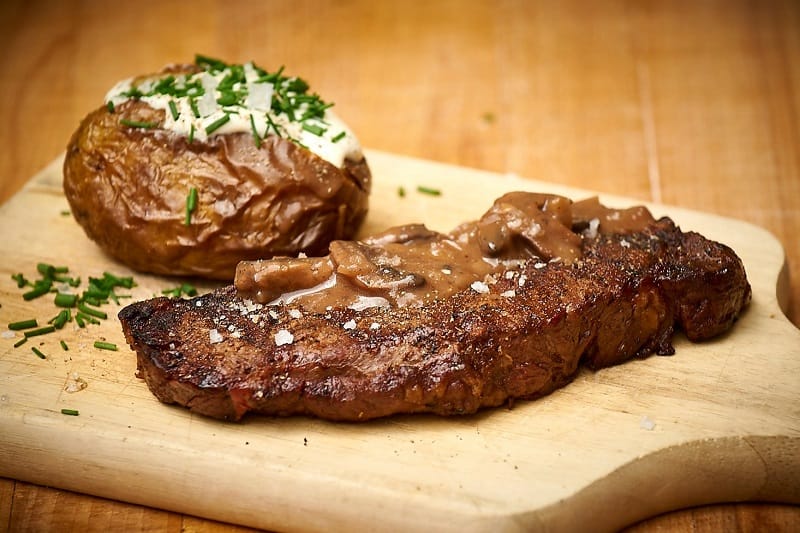
Many people wonder whether filet mignon is easier to cook than sirloin. While both types of steak offer great flavor, the filet mignon is a smaller and more delicate cut due to its lower fat content. This makes cooking a bit trickier, as it can easily become overcooked and tough. On the other hand, sirloin steak is larger and offers greater marbling and fat content, making it more forgiving when cooking.
However, with proper preparation and technique, both cuts of steak can be cooked to perfection. Whether it’s filet mignon or sirloin, the key to a great-tasting steak is to use high-quality meat, cook it to the desired temperature, and let it rest properly before serving.
How Much Cholesterol In Filet Mignon?
A serving size of 3 ounces of filet mignon contains about 82 milligrams of cholesterol. While this is slightly higher in cholesterol compared to other leaner cuts of beef, it is important to remember that the recommended daily cholesterol intake for healthy adults is approximately 300 milligrams. Therefore, incorporating filet mignon into one’s diet in moderation can be an enjoyable and nutritious choice.
Is Filet Mignon Healthy?
Filet mignon can be a healthy option as it is a good source of B vitamins and protein. It is also a lean meat cut, meaning it is low in fat and calories. However, it is important to choose a healthy cooking method to ensure that the filet’s nutritional benefits are not offset by added fat and calories.
For example, grilling or broiling the meat is a good option as it drips the excess fat away. So, if enjoyed in moderation and prepared healthily, filet mignon can be a tasty and nutritious addition to a balanced diet.
Can Filet Mignon Be Cooked To A Higher Temperature Than Sirloin?
The answer is yes, but it’s important to remember that filet mignon is a leaner cut of meat, while sirloin has more marbling. This makes filet mignon more susceptible to becoming dry and tough if overcooked. Therefore, it’s best to cook filet mignon at low to medium heat and aim for a medium-rare to rare temperature for a soft, melt-in-your-mouth bite.
If opting for sirloin, it’s more suited for higher-heat cooking methods and can be cooked to a higher temperature without sacrificing tenderness. Ultimately, the choice depends on personal preference and the desired level of doneness.
Can You Use The Same Seasoning Or Marinade For Both Types Of Steak, Or Are There Key Differences To Keep In Mind?
The answer is that while there is some overlap between the two, there are also important differences to remember. Rubs, which are dry mixtures of spices and herbs, are best for thicker cuts of meat, such as ribeye or T-bone, as they penetrate the meat’s surface and add extra flavor.
Marinades, on the other hand, are best for thinner cuts of meat, such as flank or skirt steak, as they need time to soak into the meat and tenderize it. Marinades often contain acid or enzymes, breaking down the meat’s fibers and making it more tender. Overall, it’s important to experiment with different seasoning and marinade combinations to find what works best for each cut of steak.
Filet Mignon vs Sirloin Steak – Final Thought
In conclusion, Filet Mignon and Sirloin are both excellent cuts of steak. Filet Mignon is leaner than Sirloin and has a more delicate flavor, while Sirloin is a heartier cut with a more robust flavor. Filet Mignon is more expensive than Sirloin, so it is important to know your preferences and budget before deciding which cut of steak to purchase. Ultimately, the decision between Filet Mignon vs Sirloin is a personal one that should be based on one’s tastes and budget. You won’t be disappointed no matter which steak you choose!
References:
- https://www.southernliving.com/food/meat/beef/steak/steak-doneness-temperatures
- https://blog.thermoworks.com/beef/filet-mignon/
- https://www.masterclass.com/articles/most-tender-steak

Hey readers! Chip Holland here, and I’m a Manager of this website. My passion for writing about it only matches my passion for BBQ. Follow my blog for mouth-watering recipes, tips, and tricks for the perfect smoke, grill, and BBQ. I’m sure you won’t be disappointed!
